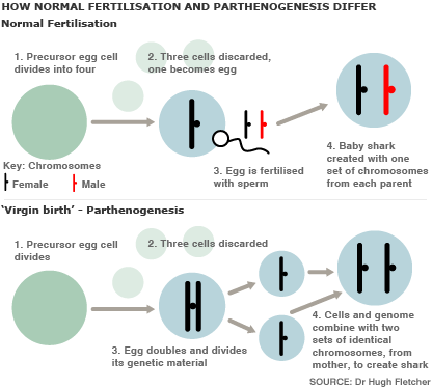Shortly after publishing this article, I was contacted by a company who wanted to air the “other half of the story” on stem cells. We assumed that this company was involved developing adult stem cells, and that they wanted to proclaim the benefits, noting the recent success that adult stem cells have had with treating MS in certain patients.
This was not the case. The company, International Stem Cell Corporation (ISCO), wanted to talk about a completely different branch of stem cell research: parthenogenic stem cells. This was one of the branches of stem cell research that combines the benefits of embryonic stem cells, as well as avoiding ethical issues much like adult stem cells do. After some additional research and talking with Kenneth Aldrich, CEO and CO-Founder of ISCO, it’s hard to deny the positives of parthenote stem cells, even for a hESC supporter like me.

“[Parthenogenic stem cells] function like an embryonic stem cell, but address two additional problems that embryonic stem cells really can’t address. One of course is the ethical issue, and that’s a significant number of people," says CEO and Co-Founder Kenneth Aldrich. "We do not use a fertilized egg, so we do not destroy anything that could become a human being."
Of course there will always be members of the population that are wary of any type of stem cell research, but avoiding the ethical issues involved in stem cell research makes parthenote stem cell technology a more viable alternative to those who could benefit from stem cell therapy but reluctant to use it.
The other main challenge to embryonic stem cell therapy is immunosuppression. Even though embryonic stem cells have the potential to form any cell in the human body, placing them is akin to an organ transplant. Foreign DNA marks the organ (or cells) as foreign and possible harmful to the body, and the immune system attacks the organ and it is rejected from the body.
"If it doesn’t match the recipient at HLA sites, human leukocyte antibody sites, the cells are going to be rejected just the way the organ would be rejected," says Aldrich. "You can reduce that rejected by immunosuppressant drugs, but unless you have a pretty close match, we believe that the therapies will ultimately be rejected.”
Fertilized eggs have a full set of DNA, from two different sources, meaning complications with transplantation are common. Parthenote stem cells, have a much simpler code since their DNA comes from only one source. The cell lines from parthenote cells are much simpler and are easier to match to patients for therapeutic use.“The homozygous parthenote cells down [immune rejection] enormously. There is no DNA from the sperm donor and because of a peculiarity of the way in which the cells were formed. Half of the DNA strands from the female are discarded and the egg reproduces the other half. You have a complete diploid cell with a complete DNA double helix, but both sides of the double helix match at every point. Which means that when you are trying to match up patients, you have a much, much simpler task.”
To clarify, ISCO claims ownership to a single cell like that will "statistically match about 350 million people, including about 5% of the US population to organ donor standards.” This is significantly higher percentage than matching with organ transplants. There is still a chance of immune rejection using parthenogenic stem cells, beacuse there is still foreign DNA, but more matches are possible.
Targets of research include diseases where treatment is possible with functioning outside cells including liver disease and diabetes. Transformed into liver cells into liver cells and islet cells, parthenote stem cells offer a virtually endless strain for treatment. ISCO has demonstrated the ability to make liver and islet cells for therapeutic programs that would match immune systems of many people as well as retinal and cornea cells for macular degeneration and cornea transplants.
Although ISCO has yet to launch clinical trials for parthenote stem cell treatment, Aldrich projects that trials are possibly as close as a year away.
“I’m hoping that Geron’s treatment for spinal cord with oligodendrocytes will also be successful,"says Aldrich. "Because anything that’s successful in treating disease whether it’s our cells or embryonic cells, that helps us all. The need is so great that I never look on anyone in this field as a competitor. We’re all trying to get to the same result. We think we have a better mousetrap, as it were. But we are striving for the same thing.”
Although Aldrich speaks of cooperation in the stem cell business and valuable advances of research that are beneficial to the human race no matter where they happen to emerge from, ISCO’s mission statement heralds that their goal is to be “the world’s leader in providing human cells to study and cure disease.”
World leader, not a company overlooked and shuffled into the background. Conflicting? Perhaps. But we shall be watching to see what the future holds for ISCO and its parthenotes.





Comments